As Livongo expands its services beyond diabetes, it’s a good time to look at the technology that makes blood pressure monitoring possible.
A proper scientific name for a blood pressure monitoring device is sphygmomanometer, which I personally find hard to pronounce, so for the rest of this post I’ll use more common, albeit unscientific name blood pressure monitor or BP monitor for short.
For many decades, physicians used a manually inflated air-bladder cuff and a listening device called stethoscope to listen to arterial wall sounds. This is known as auscultatory method of measuring blood pressure. Using this method required some practice and it was typically performed by trained medical practitioners.
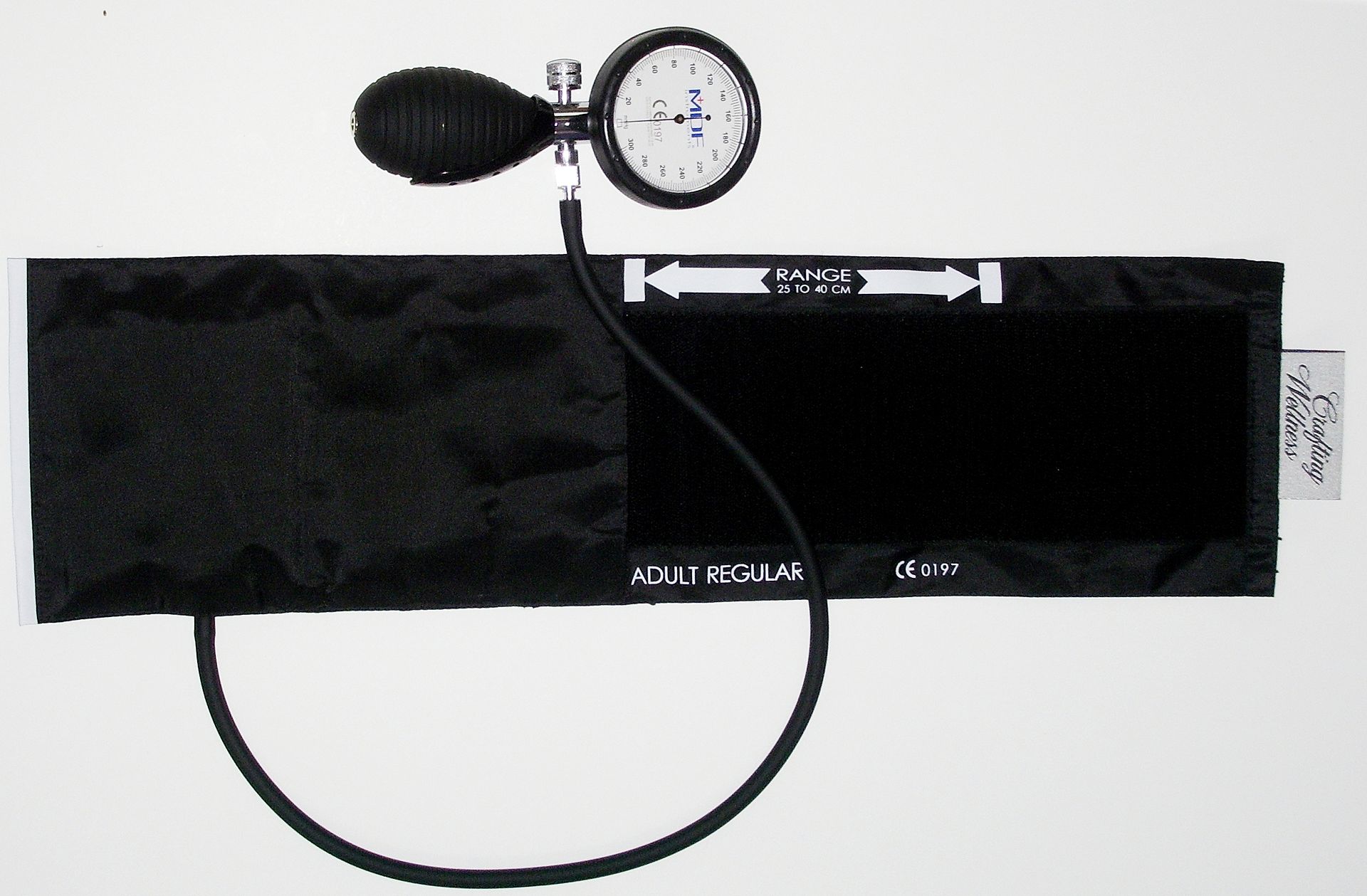
Recent advances in medical technology paved way for inexpensive, easy-to-use, digital BP monitors that anyone could use in the comfort of their homes without specialized knowledge or training.
A digital BP monitor uses an inflatable air-bladder cuff, a battery-powered air pump and a pressure sensor for sensing arterial wall vibrations to measure blood pressure in an artery. This is known as oscillometric method.
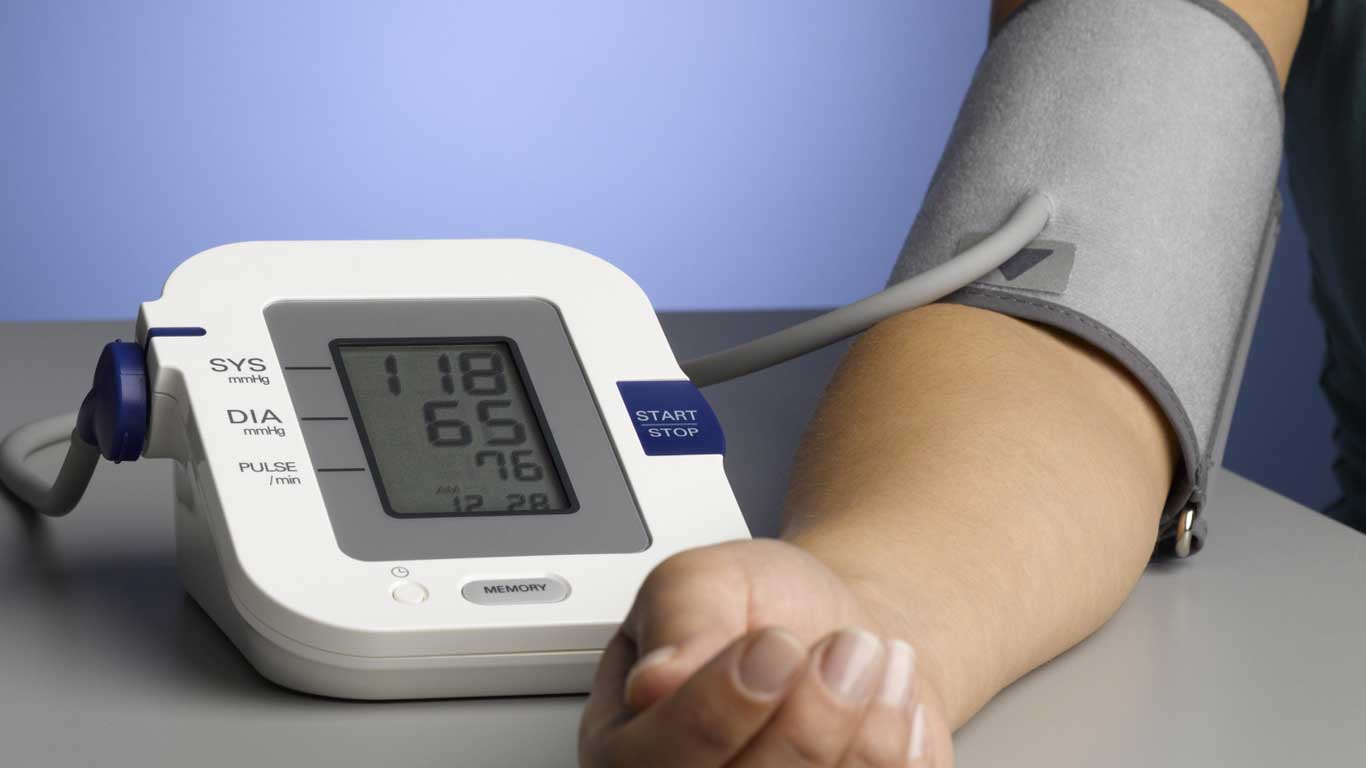
There are two types of digital BP monitors: the upper-arm (shown above) and the wrist models (shown below). The upper-arm model has a cuff that is placed on the upper arm and is connected by a tube to the monitor that rests on a surface near the arm. The wrist model is smaller and the entire unit wraps around the wrist. Regardless of the BP monitor type, the measurement method is the same.
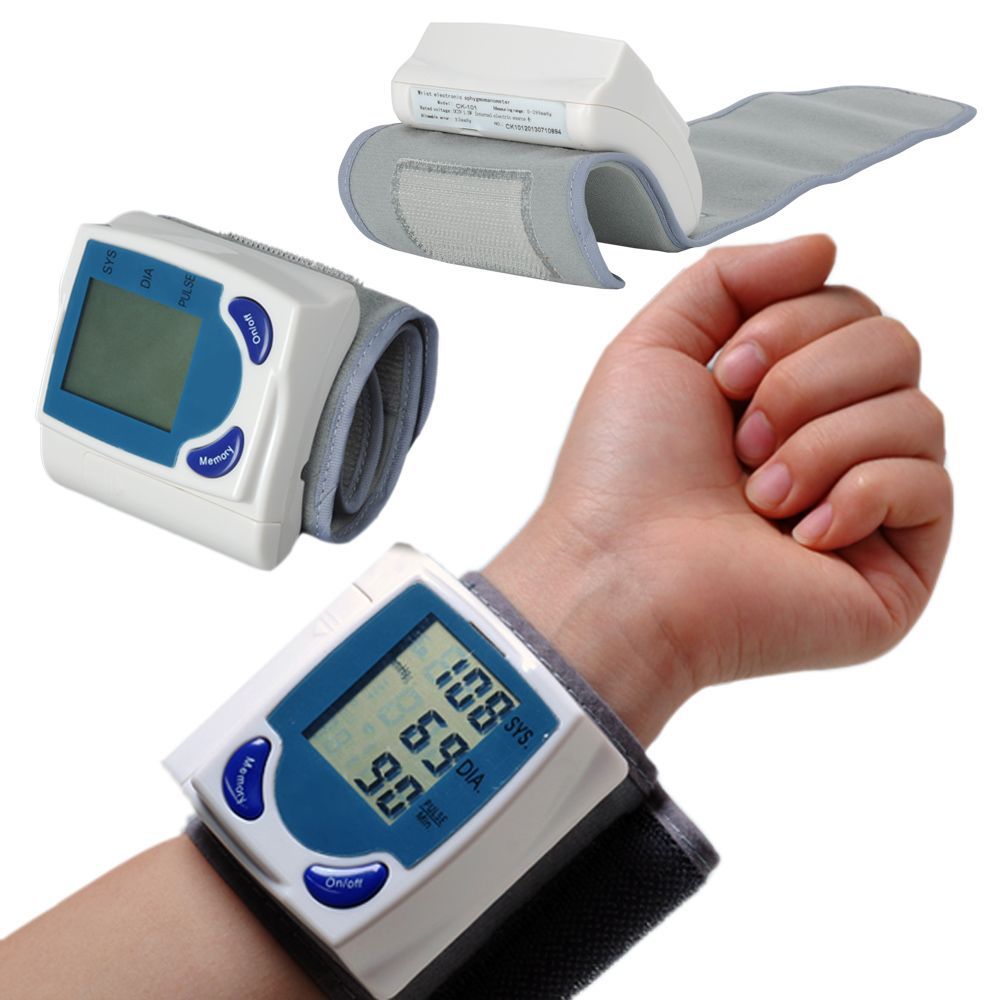
Measurement Techniques
A digital blood pressure monitor uses an air pump to inflate a cuff surrounding an upper arm or a wrist with sufficient pressure to prevent blood flow in the local main artery. This pressure is then gradually released using a digitally-controlled solenoid valve until the moment that the blood begins to flow through the artery.
The blood pressure measured by a pressure sensor at this point determines the systolic pressure. Pulse rate is also sensed at this time. The measurement taken when the blood flow is no longer restricted determines the diastolic pressure. This complete measurement cycle is controlled automatically by the micro-controller.
The signal from the pressure sensor is conditioned with an instrumentation amplifier before data conversion by an analog-to-digital converter (ADC). The systolic pressure, diastolic pressure, and pulse rate are then calculated in the digital domain using an algorithm appropriate for the type of monitor and sensor utilized. The resulting systolic, diastolic, and pulse-rate measurements are displayed on a liquid-crystal display (LCD), time-stamped, and stored in non-volatile memory.
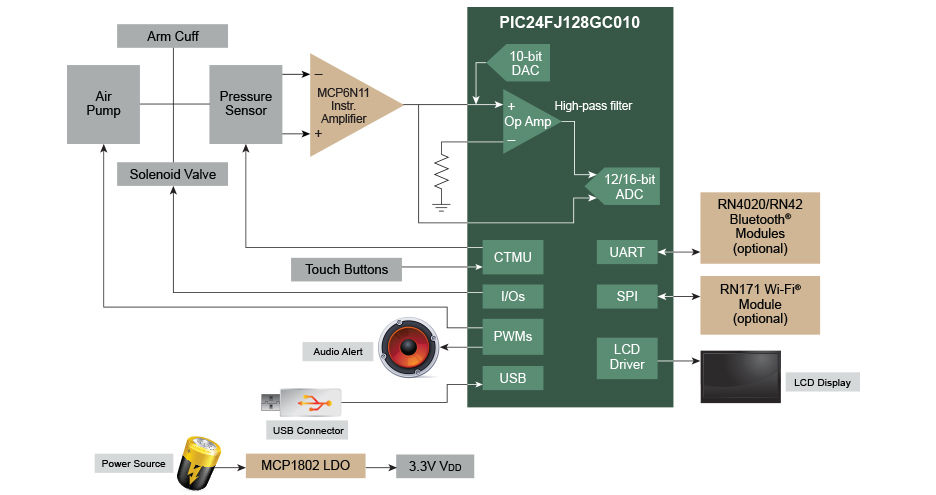
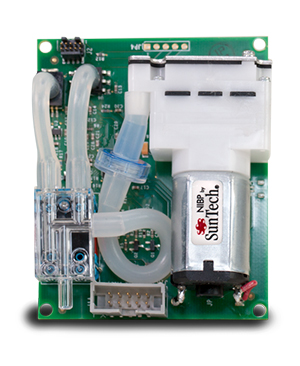
User Interface
Most BP monitors use a simple monochrome LCD with 100 segments or less that can be driven by a driver integrated within the micro-controller. Backlighting can be added by using one or more white light emitting diodes (LEDs).
A one or more physical push buttons and/or switches are typically used to turn the power on and off and to initiate blood pressure measurement.
A high-end BP monitor may use a color LCD with a touch screen to implement advanced user interface such as on-screen virtual buttons, touch menus, graphics, animations, etc.
Audible notifications in blood pressure monitors can be provided by simple beepers driven by one or two micro-controller port pins that have pulse-width modulation (PWM) capability. More advanced voice announcements can be achieved by adding an audio digital-to-analog converter (DAC) and an amplified speaker.
Connectivity
In recent years, connectivity, health data aggregation and sharing have become a trend in consumer digital health space, particularly among younger users.
Connected BP monitors have the ability to upload data to a computer or a smart phone for further analysis and tracking of measurements over time. This data transfer is usually done through a USB interface or wirelessly using Bluetooth Low-Energy (BLE) radio link.
An advanced BP monitor may also utilize Wi-Fi and/or cellular wireless networking to upload data to a remote digital health information management system without relying on a computer or a smart phone.
Power Management
Upper-arm BP monitors typically use four AA or AAA (1.5V) alkaline batteries and wrist monitors typically use two AAA alkaline batteries. Alternatively, a high-end BP monitor may use a rechargeable Li-Ion battery and a plug-in wall charger similar to ones used for smart phones.
The monitor’s air pump and analog circuitry require a 5V or 3.3V supply and the digital circuitry needs a 3.3V or 1.8V supply, depending on the technology used. Consequently, a typical BP monitor would need a buck-boost switching regulator to regulate the pump/analog supply voltage to 5V and a low-dropout linear regulator (LDO) for the 3.3V or 1.8V digital requirement.
To extend battery life, an automatic power shutdown after a certain period of inactivity may be implemented. However, a real-time clock (RTC) must be always powered on to maintain the current time while the monitor is turned off.